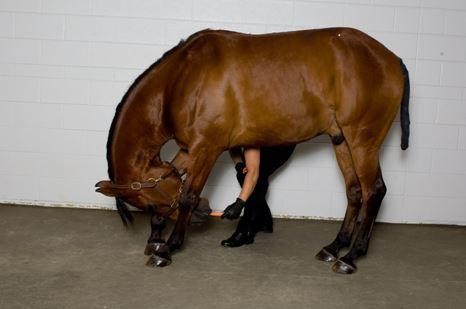
Therapeutic exercises for horses
This article gives evidence and expertise based arguments on the essential integration of physical therapy techniques and exercises into the veterinarian practice plus practical guidelines to do this. Assessment and rehabilitation of postsurgical and acute injuries, osteoarthritis, neurological disorders, back and spinal pain and dysfunction and the four stages of healing are covered topics in this article. Furthermore, it gives us easy-to-use examples of stretching, strengthening, proprioceptive and balancing exercises.
General non-favourited factors for the management of sport horses mentioned are immobilization, isolation, mental stress, signs of high-level sympathetic activity, long periods of stabling, overtraining and poor-fitted saddles. On the other hand, enhancing the flexibility of the spine, strengthening of the spinal muscles, improving motor control, balance and proprioception and integration of these factors horse specifically and gradually, are beneficial practices.
Examples of therapeutic exercises are dynamic mobilizing and stabilizing exercises (see video), pole and cavaletti work (e.g. the star obstacle), pedestal work, obstacle exercises, figure exercises (e.g. figure eight), controlled exercises on different surfaces, walking uphill and downhill, soft tail tractions, gait transitions and variations and aquatic exercises. Finally, the elastic theraband and kinesiotape can increase the efficiency with muscle stimulation and sensory integration, because of their tactile and proprioceptive cues.
Expert opinion by Isabeau Deckers
As stated in this article, immobilization is in most cases non-beneficial for healing processes and muscle development. Additionally, it is recommended for all athletes to train multi-movement strategies and physical capacities. Therefore, unmounted exercises or supporting tools to variate training are useful to optimize physical condition. Further research is still needed to expand and enhance rehabilitation and unmounted training programs for horses.
> From: Paulekas et al., J Equine Vet Sci 29 (2009) 870-893. All rights reserved to Elsevier Ltd.. Click here for the online summary.


